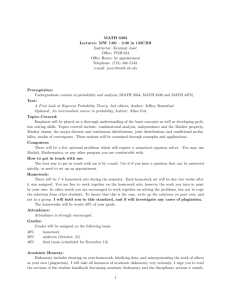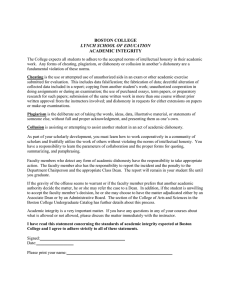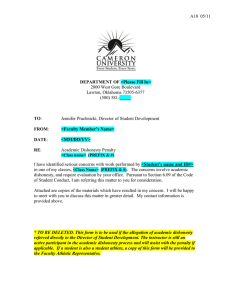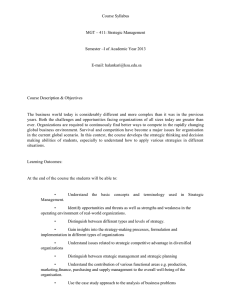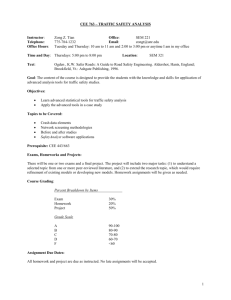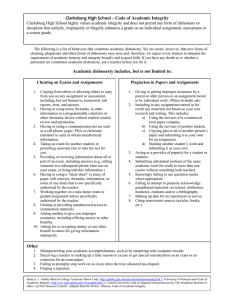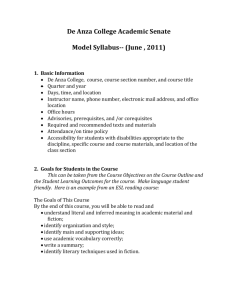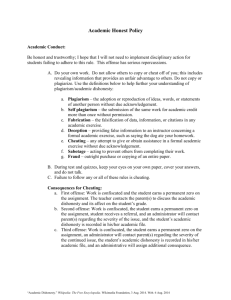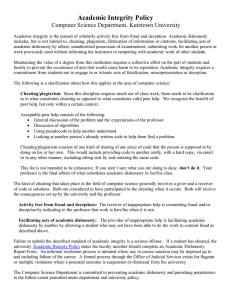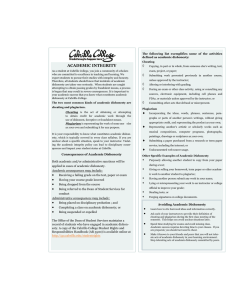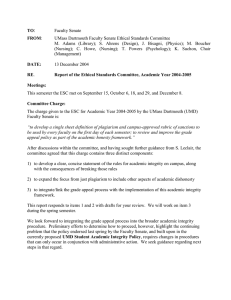corresponding intolerance of scholastic dishonesty. In cases involving academic dishonesty,
advertisement
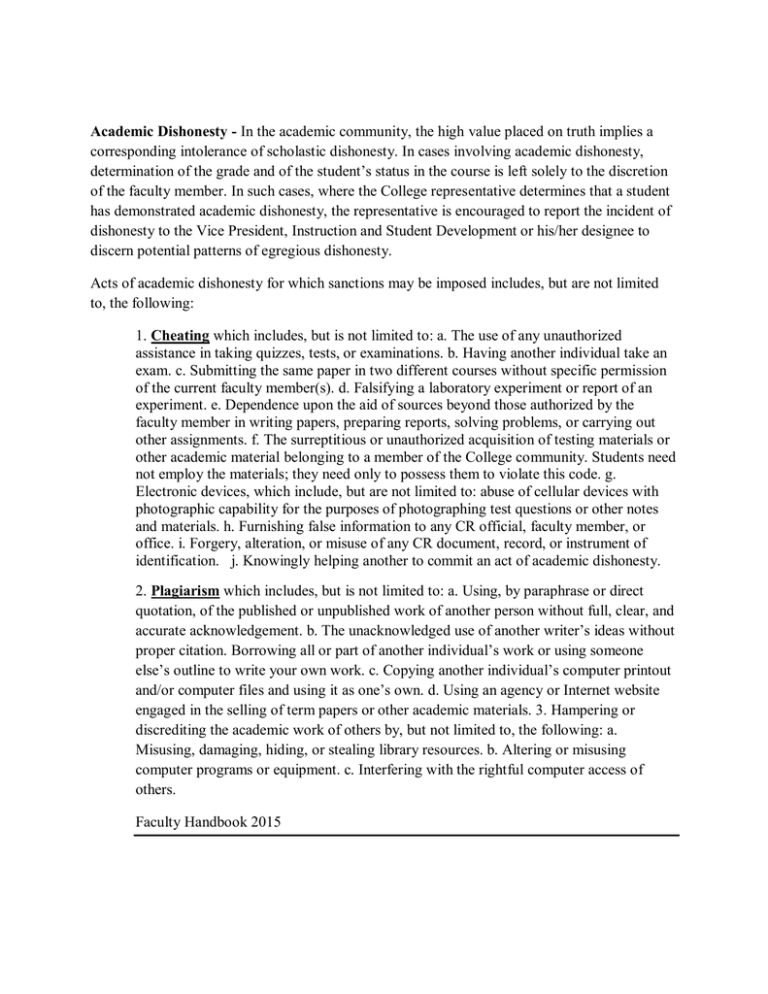
Academic Dishonesty - In the academic community, the high value placed on truth implies a corresponding intolerance of scholastic dishonesty. In cases involving academic dishonesty, determination of the grade and of the student’s status in the course is left solely to the discretion of the faculty member. In such cases, where the College representative determines that a student has demonstrated academic dishonesty, the representative is encouraged to report the incident of dishonesty to the Vice President, Instruction and Student Development or his/her designee to discern potential patterns of egregious dishonesty. Acts of academic dishonesty for which sanctions may be imposed includes, but are not limited to, the following: 1. Cheating which includes, but is not limited to: a. The use of any unauthorized assistance in taking quizzes, tests, or examinations. b. Having another individual take an exam. c. Submitting the same paper in two different courses without specific permission of the current faculty member(s). d. Falsifying a laboratory experiment or report of an experiment. e. Dependence upon the aid of sources beyond those authorized by the faculty member in writing papers, preparing reports, solving problems, or carrying out other assignments. f. The surreptitious or unauthorized acquisition of testing materials or other academic material belonging to a member of the College community. Students need not employ the materials; they need only to possess them to violate this code. g. Electronic devices, which include, but are not limited to: abuse of cellular devices with photographic capability for the purposes of photographing test questions or other notes and materials. h. Furnishing false information to any CR official, faculty member, or office. i. Forgery, alteration, or misuse of any CR document, record, or instrument of identification. j. Knowingly helping another to commit an act of academic dishonesty. 2. Plagiarism which includes, but is not limited to: a. Using, by paraphrase or direct quotation, of the published or unpublished work of another person without full, clear, and accurate acknowledgement. b. The unacknowledged use of another writer’s ideas without proper citation. Borrowing all or part of another individual’s work or using someone else’s outline to write your own work. c. Copying another individual’s computer printout and/or computer files and using it as one’s own. d. Using an agency or Internet website engaged in the selling of term papers or other academic materials. 3. Hampering or discrediting the academic work of others by, but not limited to, the following: a. Misusing, damaging, hiding, or stealing library resources. b. Altering or misusing computer programs or equipment. c. Interfering with the rightful computer access of others. Faculty Handbook 2015 Instructor Disciplinary Process (Recommended-Not in Handbook) 1. Identify Suspected Violation: Cheating or Plagiarism 2. Gather Evidence (behavioral/concreate examples): • • Cheating – student proximity with identical writing or answers on quiz/exam (especially wrong answers). Writing quality changes suggesting another writer (e.g., mom). Cheat sheet. Plagiarism – writing matches another source on the web (e.g., Google search or Turnitin.com). 3. Inform Student: Confront student with evidence • • If student accepts responsibility, the instructor may give a zero (F) or have student redo the assignment. • To involuntarily withdraw the student or assign an F for a final grade is impermissible. If student denies any wrongdoing, consult with Instructional Dean/Director to decide course of action. It is always advisable to discuss these matters with your Dean/Director as it provides evidence of “due process.” 4. Make Referral (optional): Contact Student Conduct Officer (currently VPISD) and provide student information, charge, and evidence. This is often the appropriate action if the student denies any wrongdoing or if you believe student is likely to repeat the violation. • Conduct Officer investigates and either decides there is sufficient or insufficient evidence of conduct code violation. • If student accepts decision of (non-suspension) wrongdoing there is a sanction: warning or probation (does not appear on student transcript). • If student refutes decision, there is a hearing of the Student Conduct Committee with possible sanctions from warning to expulsion. • If there is sufficient evidence for student suspension there is a Student Conduct Committee Hearing.
